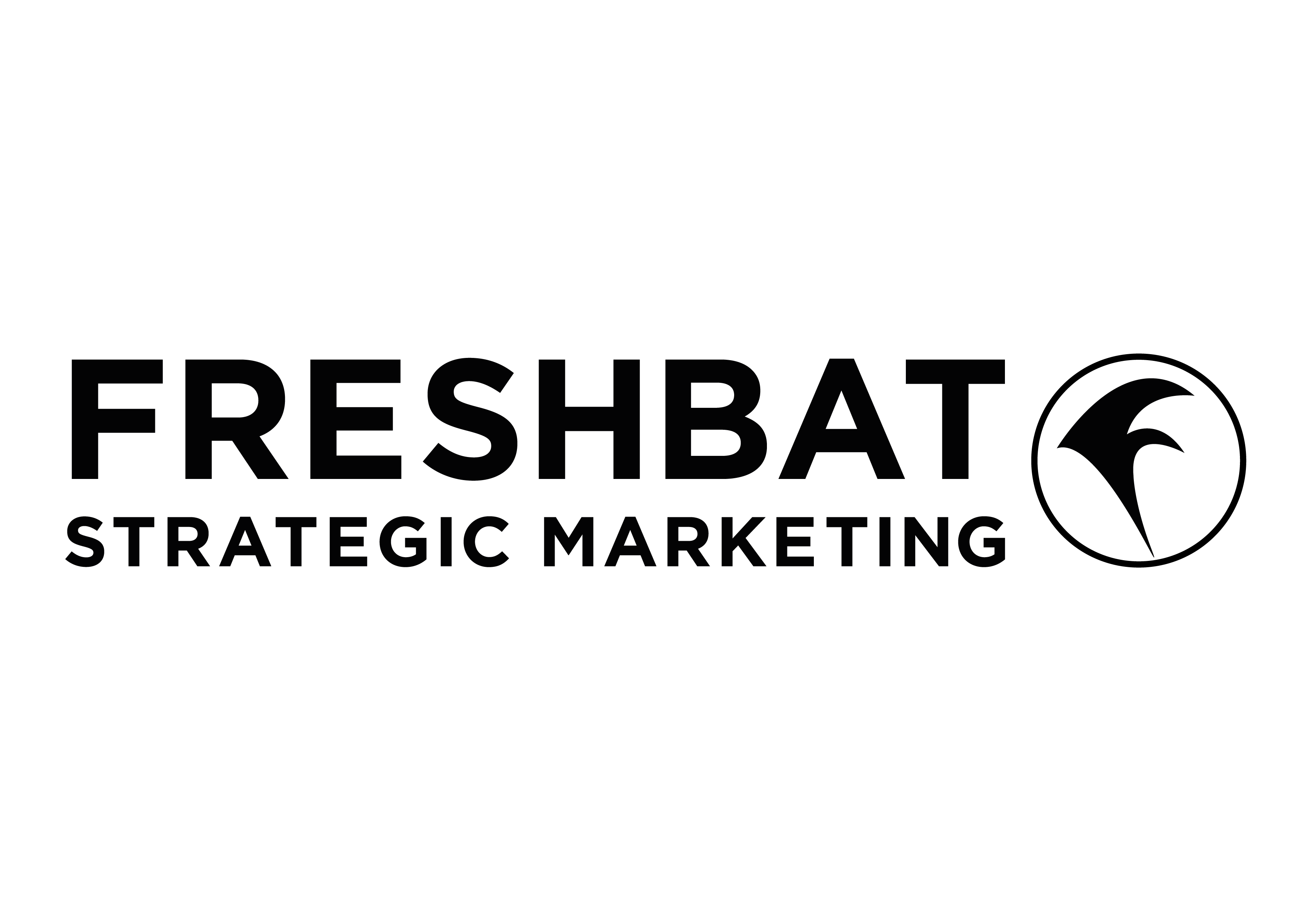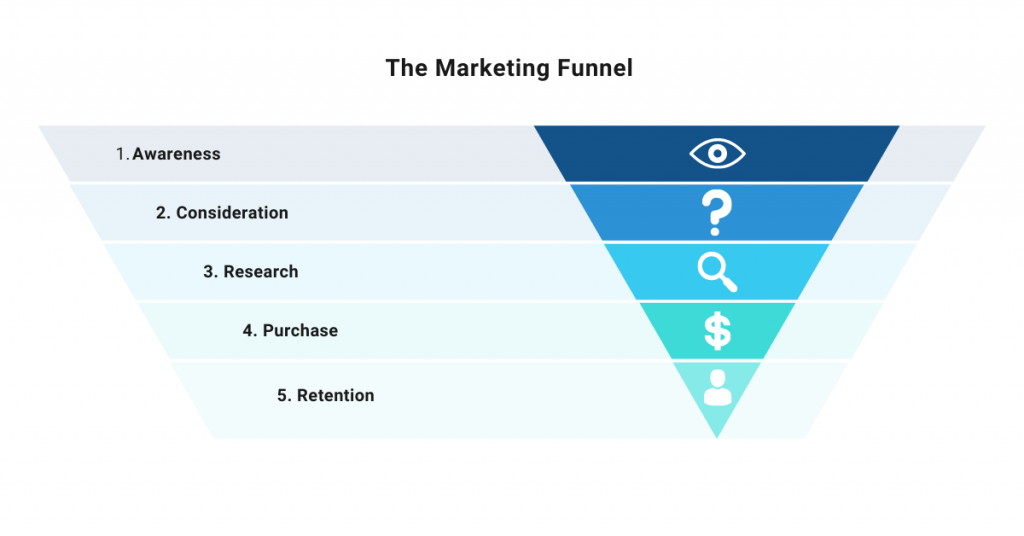If you’ve ever even so much as dabbled in marketing and tried to formalise the way you communicate with customers and generate new business, you’ve probably heard of the marketing funnel.
But you may still have questions, like: what exactly is a marketing funnel? And how will it help my business grow?
There’s no getting away from the fact that the main point of marketing for you business is ultimately to help you make sales.
The relationship between marketing and sales is closer than ever as customers have never had so much information available to them before.
This means they can find out everything they want about your business and brand without stepping out of their house.
It could be argued that the marketing funnel model is too simplistic these days as there are so many touchpoints. But I think it’s still a great place to start when you’re thinking about building out a marketing strategy.
A marketing funnel will help you think about the different stages of the buyer journey and start getting an idea about what marketing activities you should be doing at each stage.
Marketing funnel stages
There are typically 5 key stages in the traditional marketing funnel:
- Awareness
- Research
- Consideration
- Purchase
- Retention
Not all marketing funnel models will include retention, but I think it’s important to include because it’s a lot cheaper and easier to retain customers than constantly finding new customers. Keep reading to see why!
The idea is that brand new customers will enter the funnel at the top and your marketing activities will then help them move through each subsequent stage.
Awareness stage of the marketing funnel
The customer: This is when your potential customers first become aware of your product/service/brand. They’re currently trying to solve a problem and will have come across you through one of your marketing channels. Depending on what activities you’re doing, this could be anything from a word of mouth recommendation to an advert on social media.
Marketing activities: Typical marketing activities at this stage includes (but is not limited to): word of mouth, organic social media posts, social media adverts, blog posts, appearing in search engine results, TV adverts, traditional advertising e.g. billboards, flyers.
Research stage of the marketing funnel (sometimes called interest)
The customer: your potential customer is now aware that your product/service/brand exists and so they move to the next stage of generally being interested in finding out more about you. They will want to know things like your brand values, your services and the problems you can solve amongst other things. They could still leave the funnel at any point though if they lose interest!
Marketing activities: If you’ve captured email addresses for these leads, you can start to actively nurture them through the subsequent stages of the marketing funnel by adding them to an email sequence. Alternatively, you may be engaging with these prospects on social media if they’ve followed or connected with you there.
Consideration stage of the marketing funnel
The customer: Once a prospect reaches this stage, they are what we call a ‘qualified lead’ in marketing jargon, or in other words, they’re a good fit for the service/product and there is now a much better chance that they’re going to buy from you once they reach this stage. They are now making their final decision about whether or not to become a customer and will want to verify that you are going to solve whatever problem they have.
Marketing activities: This is where marketing typically gets more ‘aggressive’, and it’s true that prospects at this stage of the funnel are more invested so will tolerate more marketing activity. But don’t get too carried away – marketing is always a bit of a Goldilocks exercise, where customers don’t want too much or too little, but want just the right amount to help them make a decision and solve a problem. So continue to send your emails and connect with them, but in moderation so you don’t scare them out of the funnel!
Purchase stage of the marketing funnel
The customer: This is it! The moment you’ve been waiting for. You’ve made your prospect aware of your existence, you’ve shared all the information they need to know, like and trust you and you’ve given them just the right of information to get them excited and commit to making the purchase.
Marketing activities: This is the point where marketing teams in bigger businesses pass customers over to sales. It’s also where things can fall down if you don’t have a joined up process – I’m sure you can think of a time where you’ve had a great experience up to the point of buying something and have then felt let down by the actual buying process itself! This is a good opportunity for you to include some marketing activity like collecting customer feedback – how did they hear about you, why did they decide to buy from you? This doesn’t have to be done as a formal survey; it could simply be a conversation to give you valuable insights into your own marketing and sales process.
Retention stage of the marketing funnel
The customer: They have already purchased from you so they already know all about you and (hopefully!) they’ve had a positive experience. These are your warmest future prospects! They already know all the information they need to make a purchase, so it’s worth keeping in touch with this segment. This is an especially good target audience for new product launches as they’ve already bought into what you’re offering before.
Marketing activities: Unfortunately, marketing professionals all over the world are primarily tasked with the earlier stages of the marketing funnel and there never seems to be time to do retention-based activities. And ultimately, this can mean you lose good customers.
When you do decide to focus on this group, marketing activities include regular emails (this could even be only every couple of months), financial incentives like discounts and retention bonuses or even giveaways. Although it’s not always possible, your customers will generally appreciate it if you can give them something back to reward their loyalty. Which will be a lot cheaper for you than all the marketing activities you’ve had to do to get a new customer all the way through the marketing funnel!
A realistic approach to the marketing funnel
Now, let’s be honest, that all sounds very straightforward. But the reality is very different! Thinking about your marketing funnel and the ideal buyer journey is a hugely beneficial exercise for all businesses. The reality of the buyer journey though is quite different.
Consensus now is that the funnel is actually more of a cycle than a linear journey. Prospects and customers tend to flit in and out of the funnel at different stages. So this is where your marketing strategy, especially understanding the customer journey and your customer personas becomes critical.
Once you have more in-depth information about your customers and the journey they take before and after purchasing, you can refine your own marketing funnel to optimise your marketing activities.
If you need help with your marketing strategy and what marketing tools can help your business, get in touch to find out how I can help you start enjoying marketing!


